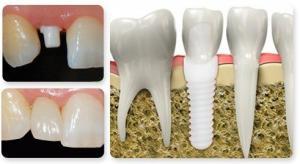
Porcelain Fillings
Introducing Composite Free or Plastic Free dental fillings. We now have Porcelain Fillings which are more Biocompatible than Plastic/Composite fillings. Composite fillings are made of tiny Plastic Particles made of the chemical Bis-GMA. Plastic Fillings often contain BPAs and have a higher incidence of patient sensitivity or allergic reactions. Porcelain Teeth Fillings contain tiny glass particles and do not cause patient sensitivities or allergies. Porcelain Fillings are tooth-colored and produce a nice cosmetic dental result. Porcelain fillings are also an ideal option when Amalgam Fillings are Removed and there is sufficient tooth structure to avoid a crown. In a holistic or biological dentistry practice, selection of biocompatible materials is integral to overall health.
Porcelain fillings offer additional advantages in that porcelain is inherently stronger than composite. Dentists hope to see better performance from Porcelain Fillings over Composite Fillings. Composite fillings in the past have been more susceptible to wear than normal tooth structure and dental crowns. The “glass” property of porcelain is more wear resistant than plastic and composite. Porcelain is a lot more like enamel in structure and moves more like enamel during chewing. Composite is more flexible and stretches more than enamel in fucntion. The greater “flexibility” of composite over enamel causes stress between the composite-enamel interface, causing a higher rate of de-bonding of the composite material. Porcelain Fillings are “fillings” which are much less expensive than porcelain crowns. Porcelain Fillings are slightly more expensive than Composite Fillings, but still only 25% as expensive as Porcelain Crowns. Porcelain Fillings can also be completed in one visit versus two visits necessary for a crown. It is important to note that Porcelain filling are not a replacement when a crown becomes necessary. Crowns are necessary when more than 50% of the tooth surface area is being replaced and the tooth is in need of rebuilding and not just filling. Fillings do not add any structural strength to a tooth, but rather they rely upon the remaining tooth structure to support it. If a filling is used is a situation where a crown is necessary, the tooth will break resulting in likely nerve damage and tooth loss.
Porcelain filling material represents the most significant advancement in dental filling material in over 30 years. The german company Voco released the material after much research in 2015 after it was approved by the FDA.


